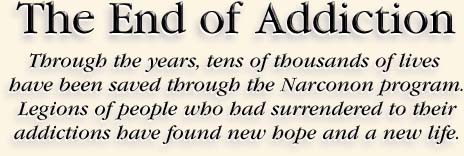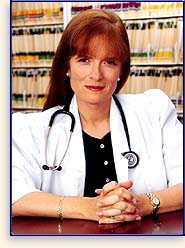


ndeed, that is how Narconon started. It began in Arizona State Prison through the efforts of William Benitez, a hard-core addict from the age of 13. He had unsuccessfully tried many ways to kick his 18-year heroin habit, including joining the Marines, committing himself to hospitals for care and therapy, and isolating himself in mining towns.
After pleading guilty to possession of narcotics on December 22, 1964, Benitez entered prison yet again — his fourth term. A friend gave him some reading materials that included a book by L. Ron Hubbard, Scientology: The Fundamentals of Thought.
“That small book impressed me more than anything else I had ever read before,” Benitez said. “I read it over and over and then got additional books by Mr. Hubbard and studied them very carefully over the months. The material identified human abilities and their development.”
Using this information, Benitez was able to conquer his addiction. As he continued his studies, he realized that these discoveries offered the first genuine hope to addicts, and in 1966 he began applying that material to help his fellow inmates.
|
Through the years, tens of thousands of lives have been saved through the Narconon program. Legions of people who had
surrendered to their addictions have found new hope
and a new life.
|
|
Benitez wrote to Mr. Hubbard, who encouraged him to expand his efforts to help others.
The program grew and, in 1971, the first Narconon center outside prison walls opened in Los Angeles. Today Los Angeles is home to the international headquarters of Narconon, a network of 38 drug rehabilitation and drug prevention centers in the United States, Mexico, Canada, Colombia, Spain, Italy, Switzerland, France, Germany, Sweden, Denmark, the Netherlands, England, Russia, New Zealand and South Africa. More are added every year.
It is officially recognized in several countries as the most effective drug rehabilitation available and receives government funding in a number of nations. Narconon has an unsurpassed success rate, according to independent studies, with up to 72 percent of its graduates still off drugs after two years. More and more, judges and government agencies refer drug addicts to Narconon for rehabilitation, rather than to jail or prison. Such an option is afforded by courts in Denmark, Italy, the Netherlands, Spain, Sweden and the United States.
While it is strongly supported by the Church of Scientology, among other groups, Narconon is an independent, non-religious, non-profit corporation. It is open to people of all races and creeds.
Narconon began to use a detoxification program in 1979 based on breakthroughs which Mr. Hubbard made concerning the long-term biochemical effects of drugs — a major discovery that residues of drugs and toxins lodge in the fatty tissues of the body and stay there for years after they have been ingested. These residues can create adverse effects on the individual causing fatigue, lack of perception and confused thinking. This discovery forms the basis for a revolutionary detoxification program which removes residual toxins and drugs from the body.
“Customary medical procedures held no solution to this problem of drug and toxic residuals,” said Megan Shields, M.D., a medical adviser to Narconon. “Various ‘treatments’ were proffered, ranging from the psychiatric viewpoint of getting the person to believe that the problem he was experiencing from toxins was all in his mind, to the administration of drugs to suppress the symptoms exhibited. These ‘treatments’ only served to compound the problem.” The detoxification program, she said, provided the solution.
Shields put both casual and long-term heavy drug users she described as physically “ravaged by the effects of drugs” through the program.
“The depression, hopelessness and fear which so often accompany such problems were evident in many of these patients,” she said. “Upon completion of the program, these people were changed both physically and mentally. The common theme expressed by those who completed the program is that they were no longer encumbered by chemicals which were shutting off their lives. They expressed increased mental clarity and new hope for the future. Their lives upon completion of the program were happier, healthier and more productive.”
The Narconon program also uses an exact series of drills, exercises and study steps which enable an addict to not only eliminate his habit but assist him to address his problems which preceded his addiction.
Further steps in the program include a series of communication exercises which assist the person to improve his relationships, a course which teaches the basics of how to study and other studies to help the person deal with new challenges as they arise in his life.
Leaders in the drug rehabilitation field praise the program. Professor Alfonso Paredes of the UCLA School of Medicine, an expert in the area of drug dependence who has served as a consultant to Narconon and reviewed the program in detail, said, “An important aspect is the systematic application of techniques to improve communication and interpersonal skills in persons dependent on alcohol and/or drugs. The techniques include training in personal values, integrity and in general covers ethical principles. ... This area is in my opinion critical in the treatment of persons affiliated with addictive disorders.”
The result is a person who knows that he is free from drugs and drug residuals and also free from any desire to take drugs again. 
|







